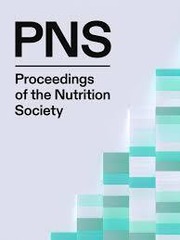Understanding the impact of exercise on appetite is important in the context of energy balance(Reference Slater, Dieter and Marsh1). The satiating effect of proteins as a macronutrient has been well established for both whey and plant-based proteins(Reference Lorinczova H, Deb and Begum2). Protein is commonly consumed in trained individuals post-exercise. However, whether resistance training (RT) alters the appetite response to plant protein ingestion has not been investigated. The current study investigated the impact of RT compared to rest on the appetite response to soy protein.
The study was a randomized crossover trial. Participants were physically active resistance- trained males aged 18–40 years. 14 males (age (years): 26.7 ± 6.7; BMI (kg/m2) 23.7 ± 2.0), underwent two test visits in which RT or rest was carried out in randomised order. The RT bout consisted of whole-body exercise at 75% 1-RM, while rest involved one hour sedentary activity. Participants then drank a protein shake (30 g soy protein and 200 ml apple juice) and one hour later were served with an ad libitum lunch meal composed of a homogeneous pasta bake, yogurt and water. Appetite was assessed over 6 time-points during the test day, and palatability was assessed post protein shake and lunch meal, both using visual analogue scales (VAS). Energy intake was evaluated by weighing the amount eaten during the lunch meal. Statistical analysis was performed using IBM SPSS version 27 for Windows (SPSS Inc., Chicago, IL, USA) and GraphPad Prism version9.4.1 for Windows (GraphPad Software, San Diego, CA, USA). After Shapiro–Wilk test of normality, paired t-test was performed to assess the difference in palatability and energy intake. Mixed ANOVA was performed to evaluate the time, treatment, or time*treatment effect on appetite. Statistical significance was considered at p < 0.05. Data are reported as mean (SD).
Palatability of both protein shake and lunch meal did not differ between the two conditions (p > 0.05 for each question: pleasant, satisfying, filling, sweet, savory). There was a main effect of time (p < 0.01) regardless of treatment (exercise or rest) for “hunger”, “fullness” and “desire-to-eat” (p > 0.05 for all). There was no difference in absolute ad libitum test meal energy intake between conditions (rest: 1697 ± 494 kcal; exercise: 1761 ± 543 kcal; p > 0.05).
These data suggest that appetite perception and energy intake do not change in resistance trained physically active males when resistance training is performed prior to 30 g soy protein supplementation. This result is important to consider for resistance trained individuals aiming to maintain energy balance or aiming for a caloric surplus as part of a strategy to gain lean mass. Moreover, as the increase of energy expenditure was not compensated by an increase in energy intake, this combination may be beneficial for individuals seeking to reduce body fat mass.



